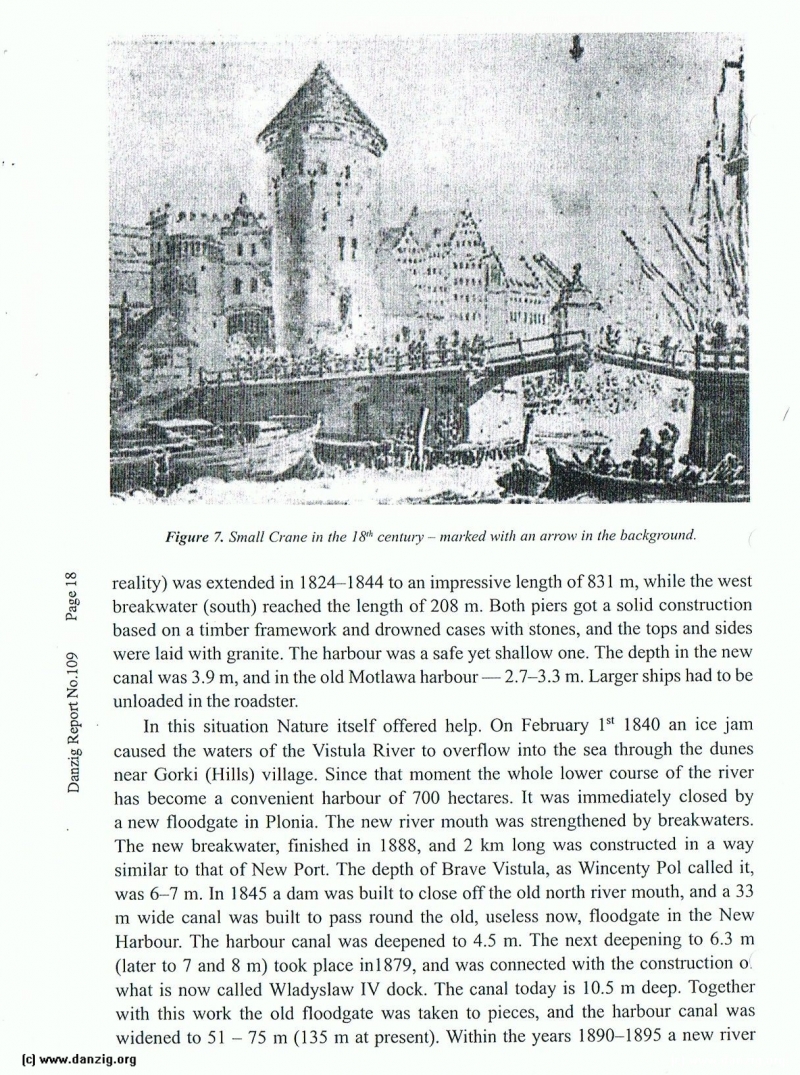
reality) was extended in 1824—1844 to an impressive length of 831 m, while the west breakwater (south) reached the length of 208 m. Both piers got a solid construction based on a timber framework and drowned cases with stones, and the tops and sides were laid with granite. The harbour was a safe yet shallow one. The depth in the new canal was 3.9 m, and in the old Motlawa harbour — 2.7—3.3 m. Larger ships had to be unloaded in the roadster.
In this situation Nature itself offered help. On February l 1840 an ice jam p caused the waters of the Vistula River to overflow into the sea through the dunes near Gorki (Hills) village. Since that moment the whole lower course of the river has become a convenient harbour of 700 hectares. It was immediately closed by a new floodgate in Plonia. The new river mouth was strengthened by breakwaters. The new brcakwater, finished in 1888, and 2 km long was constructed in a way similar to that of New Port. The depth of Brave Vistula, as Wincenty Pol called it, was 6—7 m. In 1 845 a dam was built to close off the old north river mouth, and a 33 rn wide canal was built to pass round the old, useless now, floodgate in the New Harbour. The harbour canal was deepened to 4.5 m. The next deepening to 6.3 rn (later to 7 and 8 m) took place in 1879, and was connected with the construction o what is now called Wiadyslaw IV dock. The canal today is 10.5 m deep. Together with this work the old floodgate was taken to pieces, and the harbour canal was widened to 51 — 75 m (135 rn at present). Within the years 1890—1895 a new river
Danzig Report Vol. 1 - Nr. 109 - October - November - December - 2000, Page 24.
Hits: 3160
Added: 29/07/2015
Copyright: 2025 Danzig.org

